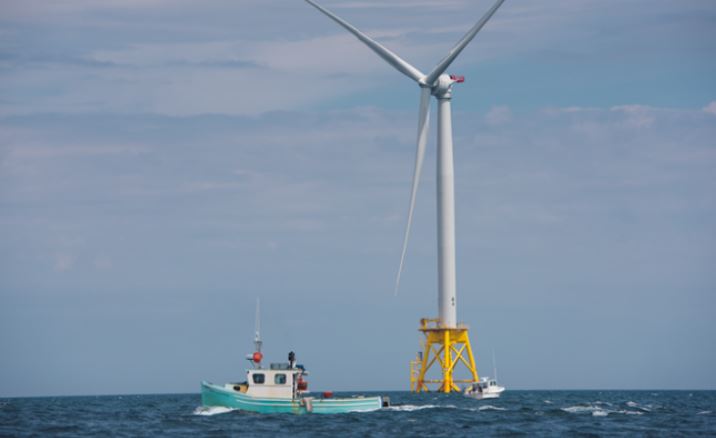Offshore wind energy developer Ørsted is introducing the New Jersey public to its Ocean Wind project – at a planned 1,100 megawatts the largest U.S. waters project to date.
“New Jersey is at the epicenter of offshore wind,” said Kris Ohleth, Ørsted’s senior stakeholder relations manager, as she opened the company’s first meeting in Atlantic City Monday evening. “We can supply the nucleus of the supply chain.”
That’s music to the ears of southern New Jersey political and labor leaders, in a region that never fully recovered from the Atlantic City casino industry’s downturn and construction recession after the 2008 financial meltdown.
Ørsted opened an office in the city last year to prepare for building the Ocean Wind project on a federal lease 15 miles offshore, and it’s expected the company could soon pick a location for its onshore support station and docks on the city waterfront.
That would represent 70 permanent jobs, beyond the 3,000 construction jobs the company predicts for its building cycle through to 2024. The company is already working with the city school system and Richard Stockton University to recruit future workers and plan for training and workforce development.
New Jersey’s commercial fishing industry is still waiting to see how the details of the plan evolve. The long-established mobile trawl gear, scallop and sea clamming operators have been particularly outspoken, warning like their New England colleagues that missteps by the company and federal Bureau of Ocean Energy Management could put them out of business.
“These windmills are going right in prime fishing grounds. Regardless of what happens, we’re going to lose some fishing grounds,” said Michael LaVeccia, vice president of operations for LaMonica Fine Foods, a Millville, N.J. processor of surf clams and ocean quahogs.

Mike LaVecchia of clam processor LaMonica Fine Foods makes a point talking with Adam Wilson, a community liaison between fishermen and the offshore wind energy industry. Kirk Moore photo.
The clamming industry sees two must-haves if it is to co-exist with a new wind power industry, LaVecchia said: two-mile clearances between turbine towers, to ensure clam boats can maneuver towing their heavy hydraulic dredges, and a minimum 6-foot depth for burying power transmission cables in the sea floor.
There are plenty of unknowns beyond that, both commercial and recreational fishermen say. The big New Jersey party and charter boat fleet is debating how laying cables, pile driving and electromagnetic fields from equipment might affect their seasonal fisheries.
Clammers are wondering how implanting rows of towers might alter current and tidal patterns, LaVeccia said.
“When we have a full moon we can’t catch clams,” LaVeccia said, referring to the stronger tides. “We don’t want to have the full-moon effect seven days a week.”
Meanwhile, this week the Mid-Atlantic Fishery Management Council and New England Fishery Management Council jointly posted a new webpage about offshore wind in the Northeast region.
Online at http://www.mafmc.org/northeast-offshore-wind the page is designed as a single stop where fishermen can learn about the latest proposals and view related documents.







